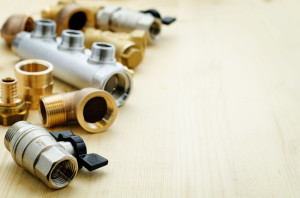 When we’re preparing to submit a bid for a project, our team researches what materials we will need that fits within our budget. It’s an important job that requires in-depth knowledge of the plumbing world and the project’s water needs.
When we’re preparing to submit a bid for a project, our team researches what materials we will need that fits within our budget. It’s an important job that requires in-depth knowledge of the plumbing world and the project’s water needs.
Each project requires a variety of plumbing materials. It would be so much easier to use the same materials for every aspect of the plumbing system, but that’s just not possible. There are many materials that we use for pipes, and each has its advantages and disadvantages. Here’s a quick breakdown of the most common pipe materials.
- Stainless steel: These pipes are more expensive and require special couplings to be attached to other pipes. They are an excellent choice for areas prone to corrosion or coastal regions.
- PEX: These flexible plastic pipes look like garden hoses, but they are great in small applications. They have a higher initial cost but require little maintenance and have a fast installation process. Since most of our projects are commercial, we don’t often use PEX.
- Copper: Copper pipes are the most traditional plumbing pipes and are still widely used in the industry today. They are great for both hot and cold water and have excellent reliability. They do need to be soldered together, but our team has the training to do this!
- PVC: PVC pipes are increasingly popular, as they are relatively inexpensive, can be manufactured to varying levels of thickness, and work for cold or hot potable water and sewage applications. PVC pipes are easy to install and durable. We use a lot of PVC in our projects!
- Galvanized: These types of pipes used to be the gold standard. They’re becoming less common in residential settings but are still used in commercial projects, especially for sanitary pump discharge or outdoor gas.
- Brass: These pipes are great for rust resistance and distributing hot water. We often use brass materials for pump fittings, water tanks, and fixtures. Brass pipes can last for years and are great for large systems.
- Cast Iron: These pipes are heavier and typically used for underground distribution. We use a lot of these on larger commercial projects, including drainage and sewage systems.
We hope that this quick overview helps you see a little bit of the planning that our team puts into each project bid. We consider the water needs of the whole project, the scale, and scope of the project, the overall budget, and the long-term reliability of each material. You can expect our team to do its due diligence and provide quality work and materials for each project.






